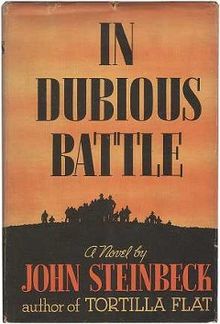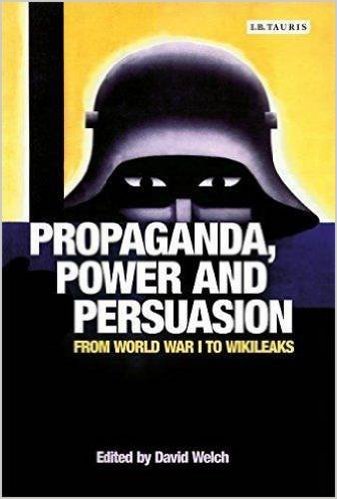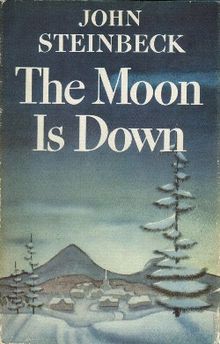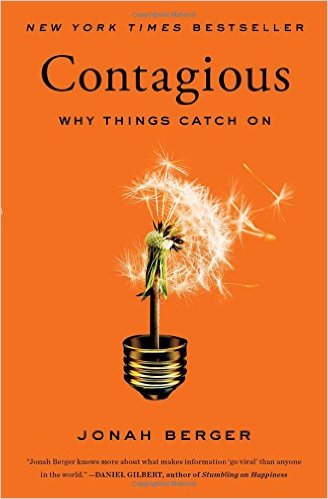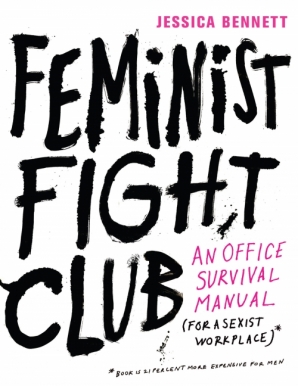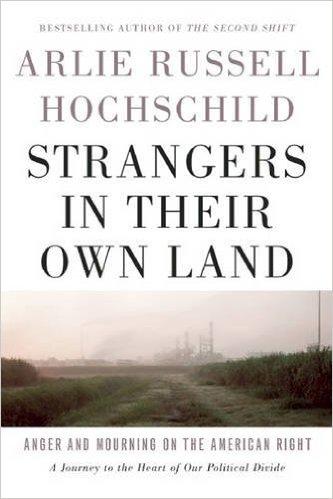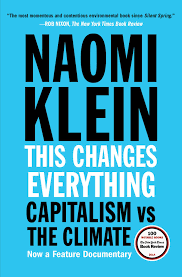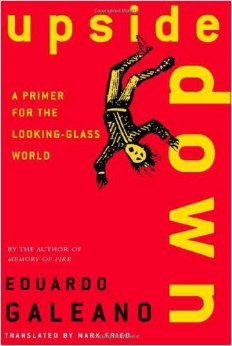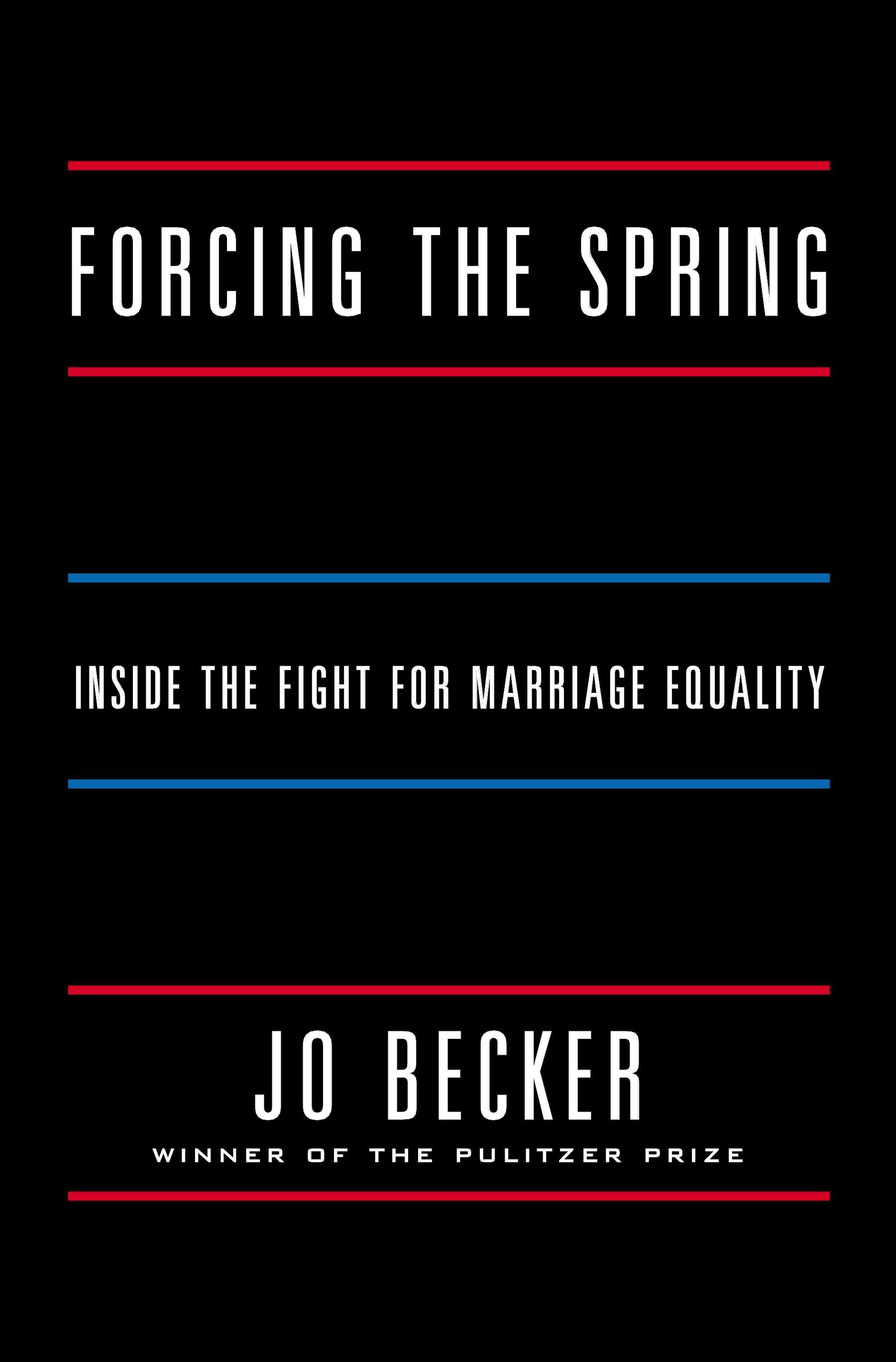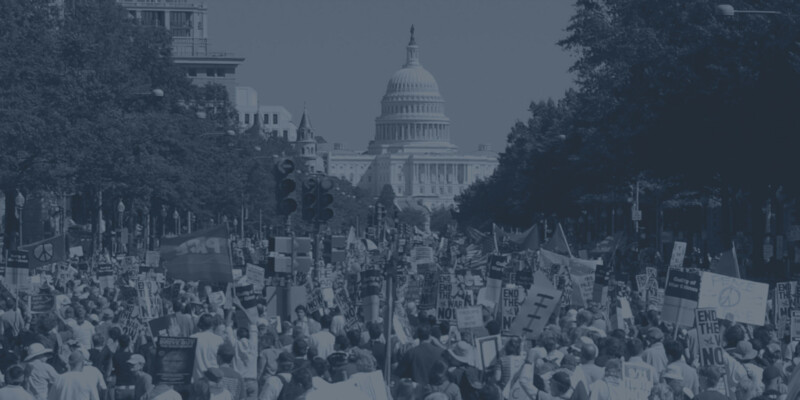
These are a few of our favorite books…
It’s the Holiday season and we recently had an impromptu book exchange and discussion amongst all of the folks that work at ReThink. We had such a nice time discussing a few of our favorite reads that, in the spirit of the season, we thought we’d share them with you. You can think of this as a gift from all of us to all of you, or you can think of it as a shopping list for that special politically-engaged someone that you know.
Our first round leans heavily toward nonfiction and books on politics and social issues, but maybe in a future round, we’ll dive into our fiction picks. We don’t have reviews from every staff person due to the vagaries of vacation and work schedules, but wherever we could get them, we grabbed a few quick thoughts from the member of our team that recommended the title in question.
P.S.: We’ll take the occasion to encourage you to find these books at a local, bricks and mortar bookstore. We are, after all, in the business of social change, and monopolies of thought and communications are bad for business.
Trouble I’ve Seen
Book Title: Bayard Rustin: Trouble I’ve Seen
Author: Jervis Anderson
Reviewer: Peter Ferenbach, Co-Founder
What’s the book about: Everyone knows the rough story of the historic 1962 March on Washington and Dr. King’s historic I Have a Dream speech, but how did it actually happen? How did the dozens of groups involved agree to cooperate? How did the logistics get organized? Who managed relations with official Washington, which was terrified of “an invasion.”
The March was conceived and organized by Bayard Rustin, one of the most important strategists of the Civil Rights Movement. A pioneer of nonviolent action, Rustin served prison time as a conscientious objector in WWII, and played critical roles in the Fellowship of Reconciliation, the War Resisters League, the Congress of Racial Equality, the Student Nonviolent Coordinating Committee and other groups. In addition to being a pacifist, Rustin was personally criminalized as a gay man, and variously a Communist and a Socialist as his political views evolved. And toward the end of his life, in a reflection of his complexity, he drifted toward conservative politics.
Why it helps our groups: Social change is first and foremost about hard work. It’s also about political struggle; diplomacy between organizations, competing egos, and agendas. But is equally about defining your own identity.
In Dubious Battle
Author: John Steinbeck
Reviewer: Peter Ferenbach
What’s the book about: A rare fiction title on this list, In Dubious Battle is one of Steinbeck’s trilogy of books set in the Depression. I read this book almost 40 years ago, as a very politically engaged high school student and the basic themes have stuck with me ever since. In my mind, that’s a testament in its own unusual way.
The novel uses the story of a strike among fruit pickers in California’s Central Valley, to examine classic questions of means and ends, of ego and selflessness. Where is the line between a person’s commitment to their beliefs and fanaticism? When does an organizer cross over from respecting and loving their community to treating them with contempt? How do you manage the political necessity of objective detachment with the human necessity of personal connection?
Why it helps our groups: We are all fallible and doing our best to make smart decisions for the causes and groups we work for. Sometimes we get those decisions right, and sometimes we do not. But at the heart of every decision is a personal struggle that defines our ethics and our identity.
The Tipping Point

Book Title: The Tipping Point
Author: Malcolm Gladwell
Reviewer: Lynn Fahselt, co-Founder and Director
What’s the book about: Gladwell, an award-winning social scientist, explores the question of how and why ideas, cultural trends, and social changes take hold. Surveying multiple case studies, Gladwell examines the interplay of the ideas at hand and the different roles that varying types of people play in either spreading the idea, or stopping it. Many of these dynamics are more intuitive than deliberative and many are frankly, counter-intuitive.
Why it helps our groups: With more than 30 years of experience in social change communications, I chose this book because frankly, the goal is to win. And if you believe in winning real progress on the issues you address, then you need to devote considerable time and effort to understanding the human and social dynamics that make each and every effort more, or less, likely to succeed. The best-researched position paper or policy analysis in the world won’t necessarily make a damn bit of difference if it isn’t persuasively communicated to the right audience, in the right manner, and with as much understanding of the dynamics of social change as possible.
The Art of War
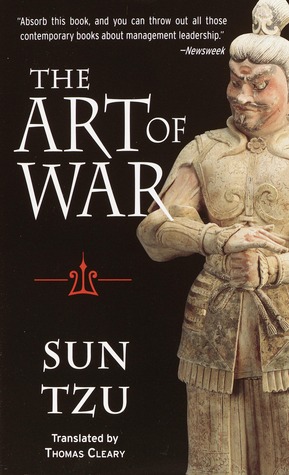
Book Title: The Art of War
Author: Sun Tzu
Reviewer: Lynn Fahselt
What’s the book about: A 2,500-year-old classic, The Art of War is a definitive treatise on strategy. Written by a Chinese general (or perhaps several) the Art of War is as much an examination of the human condition as a guide to designing wise strategies and making smart tactical decisions. Sun Tzu examines questions such as how to win an engagement when your forces are weak and how to sustain the morale of your people.
Well-paired with other classic of strategy like Saul Alinsky’s Rules for Radicals, The Art of War provides a foundation for strategic thought. Alinsky describes his book as a guide to those who want to know “the difference between being a realistic radical and being a rhetorical one.” Sun Tzu might have described his as aiming to help thinkers understand the difference between a losing strategy and a winning one.
Why it helps our groups: When a book of strategy remains a classic after 2,500 years and is a standard text in innumerable advanced-degree programs, it’s likely for a reason. While many social change advocates might be put off by the title or the book’s frequent appearance at business schools, that’s a mistake. The groups, issues, and movements we work with gain immeasurably from studying strategy. Certainly, ideas and concepts need to be adapted to modern circumstances at hand and scenarios that don’t involve military conflict, but while the times and the issues change, the principles of strategy are enduring human questions.
Propaganda, Power and Persuasion: From World War I to Wikileaks
Book Title: Propaganda, Power and Persuasion: From World War I to Wikileaks
Author: David Welch
Reviewer: Ashley Houghton, Managing Director – Security & Rights
What’s the book about: Through more than 200 items, author David Welch explores the nature of state propaganda around the world with a particular focus on the 20th and 21st centuries. Featured items include books, cartoons, films, games, music, newspapers, posters, statistics, social media, and the Internet. He also provides an analysis of what propaganda actually is as an object that can be used for good or evil, with a question of what propaganda means during the age of Facebook and the Internet. A bit of a dense read – I read Welch’s previous analysis of propaganda in college and absolutely loved it. This seems to be an updated version of his old book. More information/review here.
Why it helps our groups: This helped me reassess the view I have of my own work as a propagandist for good, and interpret government-driven content through an entirely different lens. We’re also going to be dealing with a really strange propaganda machine in the Trump administration and I think a review of propaganda by democratic entities would be useful. If I were to ever go back for a master’s degree, it would be in this.
The Moon Is Down
Author: John Steinbeck
Reviewer: Ashley Houghton
What’s the book about: Another Steinbeck novel, but unlike “In Dubious Battle”, this was one of the most prominent pieces of democratic propaganda secretly translated and shared among dissidents during World War II in Nazi-occupied Europe. In this novel, a small village is invaded by an unnamed army and has to decide how they will respond to the invasion. I wouldn’t necessarily read this book on its own, but instead as a fascinating study of the content that shaped the minds of citizens during wartime. Definitely a book to read immediately after Propaganda, Power and Persuasion. “Written with a purpose to motivate and enthuse the resistance movements in occupied countries, the book has appeared in at least 92 editions across the world.”
As a Steinbeck fan, I also find the distinction between this novel and the rest of his writing faaaaascinating. It’s such a different book – designed to be very easy to read, easy to perform, easy to translate.
Why it helps our groups: It’s an unofficial epilogue to the previous book I noted – a longer example of one of the most compelling pieces of propaganda in the 20th century and an opportunity to reflect on what makes content compelling, what makes individuals “patriotic”, and how Steinbeck worked to move people from the “base” category to the “choir”/”activist” category.
The Revolution Will Not Be Televised: Democracy, the Internet, and the Overthrow of Everything
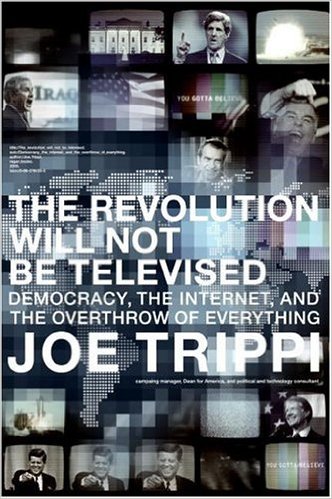
Book Title: The Revolution Will Not Be Televised: Democracy, the Internet, and the Overthrow of Everything
Author: Joe Trippi
Reviewer: Timothy Farnsworth, Managing Director – Peace and Security
What’s the book about: Then-candidate Obama’s 2008 campaign effectively used the Internet and social media to propel him from a little known Senator to the presidency, but before that, there was another campaign that set the stage for the 2008 election.
Joe Trippi was the campaign manager for Howard Dean’s 2004 presidential race. At the time, Dean was a little-known governor of the state of Vermont, who in the beginning had 432 known supporters and $100,000 in the bank. By the end of Dean’s run for the Democratic nomination, he had 640,000 supporters and raised more than $50 million—more money than any Democrat in history at the time–mostly through donations of $100 or less.
The Revolution Will Not Be Televised chronicles the first digital presidential campaign—setting the stage for how future candidates will need to use the Internet and social media in order to get their messages out and mobilize supporters.
Why it helps our groups: The 2004 presidential campaign can seem light-years away from this year’s campaign, but we still see digital media and tools playing a significant role in how presidents are elected. Just like in 2004 and how the Dean campaign’s use of the Internet and social media transformed elections, President-elect Trump’s use of social media could be the first truly-digital presidency; understanding how it was started will be the first step in knowing how to navigate it.
The Republic of Spin: An Inside History of the American Presidency
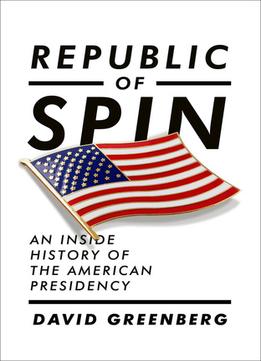
Book Title: The Republic of Spin: An Inside History of the American Presidency
Author: David Greenberg
Reviewer: Timothy Farnsworth
What’s the book about: The relationship between members of the press and the White House dates back to the founding of the United States, with each president finding ways to shape and influence how their decisions would be covered in the news. However, it wasn’t always carried out in the “professional” way it is today. Greenberg chronicles how the White House press office was transformed from casual meetings with a president and a journalist into the controlled environment of today’s modern press office.
Why it helps our groups: Throughout the campaign, Trump’s relationship with the media could at best be characterized as tense—at times restricting access to journalists and resorting to name calling at his rallies. Now that he’s been elected, a Trump presidency threatens to transform once again the relationship between the White House and members of the media in ways we have yet to imagine. Reading Greenberg’s The Republic of Spin will lay the groundwork to understanding how this relationship has changed over time and prepare us for a new way of understanding the role of the media during Trumps term in office.
Contagious
Author: Jonah Berger
Reviewer: Dorry Levine, Digital Director
What’s the book about: Much like the books “The Tipping Point” and “Made to Stick” that came before it, Jonah Berger’s book “Contagious” talks about what makes things catch on. Loaded with research about the science of “word of mouth” and social transmission.
He offers six basic principles (STEPPS) that underscore why some things catch on more than others, and for each, he delivers thought-provoking, delightful case studies.
Did you hear about the fancy steak house in Philadelphia that sells $100 cheesesteaks? Perhaps they could be selling so successfully because of several of these principles, including triggers (people around the city see others eating cheesesteaks); social currency (it sounds cool and like something exclusive); and is one heck of a story!
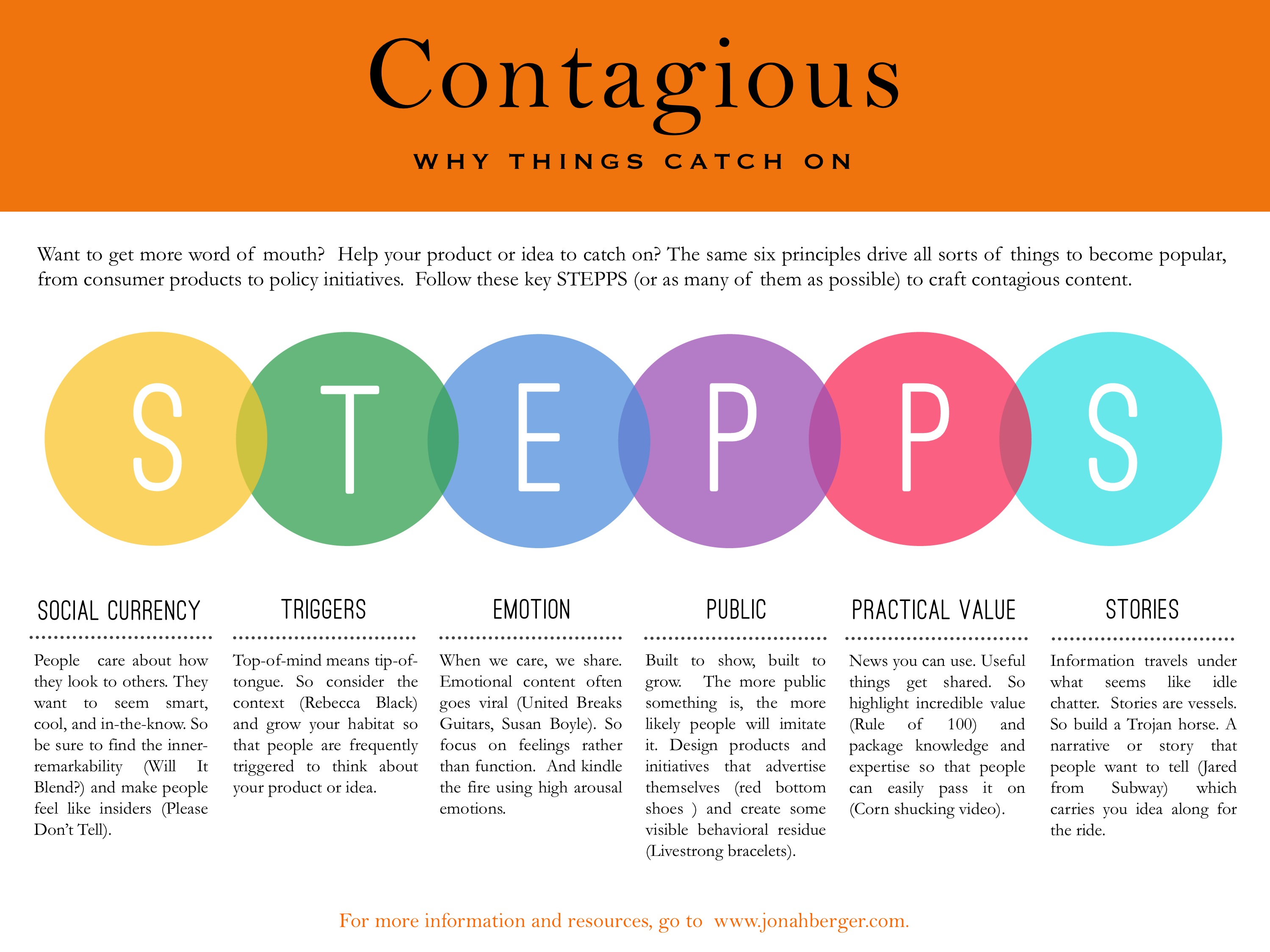
Why it helps our groups: From public policy to social media, we’re all in the market of getting our ideas heard and remembered. Thinking about how to frame our issues in the context of these six principles can help us break through noise and deliver campaigns with an impact.
Feminist Fight Club
Book Title: Feminist Fight Club
Author: Jessica Bennett
Reviewer: Dorry Levine
What’s the book about: This quick, entertaining read is chock-full of tips for women to navigate the workplace. It identifies issues that women confront (The “Man-terrupter, the “Bro-propriator,” etc.) as well as different tactics to address these issues, depending how direct or aggressive you want to be.
But it also dealt with the myriad ways women (and men!) undermine themselves, both in the workplace and in life. For instance, women and men alike are prone to adding qualifiers like “I think that…” before asserting an opinion, rather than making the direct point. While this was a great feminist anthem, I also found it incredibly useful for my work as a communicator.
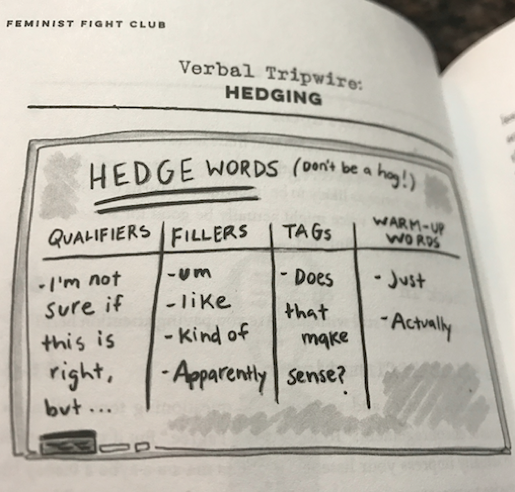
Why it helps our groups: From addressing “uptalk” to “vocal fry,” as well as identifying the words we use that undermine our points, there were great tips to make our communication stronger – regardless of our gender. Keep these things in mind in presentations, in interviews, and any time you’re trying to hammer your point home.
Data Visualization Books

Book Titles: The Visual Display of Quantitative Information
Envisioning Information
Visual Explanations: Images and Quantities, Evidence and Narrative
Beautiful Evidence
Author: Edward Tufte
Reviewer: Eva Galanes-Rosenbaum, Media & Public Opinion Analyst
What’s the book about: Tufte is a giant of data visualization, and often seen as the father of current data viz. These four books set out his principles of how to display data, why thoughtful data visualization is so important, and where people go wrong. Although each book stands alone, each book in this set builds on the previous one, and the collection is worth its (not inconsiderable) weight.
Why it helps our groups: With data literacy spreading, it is increasingly important to include data evidence in reports, clear charts in presentations, and compelling visualizations for social sharing. But the difference between good visualization and bad can be elusive if you don’t have a background in graphic design. These books are easy to follow, dense with specific examples, and beautiful. Tufte draws from a wide range of sources for his examples, from John Snow’s cholera map to NASA’s PowerPoint slides.
Dataclysm
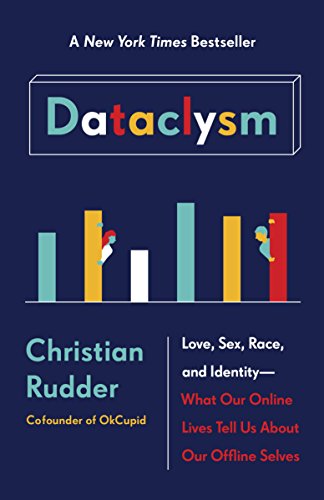
Book Title: Dataclysm
Author: Christian Rudder
Reviewer: Eva Galanes-Rosenbaum and Zainab Chaudary, Senior Media Associate
What’s the book about: Rudder’s book essentially addresses the new world of Big Data, from the perspective of the forest rather than trees. He explicitly keeps his focus on aggregate data, trends, broad strokes, and general descriptions, looking to the unprecedented datasets available to us for insights into human behavior, communities, and cultural values. As a co-founder of OK Cupid, Rudder has access to a wonderfully rich dataset of his own, but he also delves into Google, Twitter, Facebook, Reddit, and other major datasets.
Why it helps our groups: This book makes data literacy accessible and compelling. It’s also light on the technical and heavy on the insightful. If you’re interested in how people are really communicating with one another, or what data can reveal about values-versus-behavior, you’ll probably enjoy this book. Rudder sidesteps a few troubling questions about privacy, surveillance, and commodification of data, but he provides compelling insights into what big datasets can teach us about ourselves and doesn’t shy away from important topics (e.g., racism in online dating).
Strangers in Their Own Land: Anger and Mourning on the American Right
Book Title: Strangers in Their Own Land: Anger and Mourning on the American Right
Author: Arlie Russell Hochschild
Reviewer: Tyler Creighton, Senior Media Associate
What’s the book about: Strangers in Their Own Land is a timely exploration into the experiences and circumstances shaping the views of the much-talked about “white working class.” Berkeley sociologist Arlie Hochschild left her liberal enclave to spend five years getting to know voters who identified with the Tea Party in the Louisiana bayou. During her time in Louisiana she investigates what she calls the “Great Paradox” – why do some of the people most negatively impacted by corporate pollution and environmental destruction oppose government intervention to punish the polluters and prevent future pollution? Rather than hastily conclude they are simply duped into voting against their own interests, Hochschild patiently attempts to scale the “empathy wall” by probing at not just how they think but also how they feel. What she finds is a group of extremely prideful people who see their communities wrecked by falling or flat wages and declining job prospects and, at the same time, an increasingly cosmopolitan-centric worldview that mocks their beliefs and culture. In short, the Tea Party “movement serves their ‘emotional self-interest’ by providing ‘a giddy release’ from years of frustration.”
Why it helps our groups: The origins of this book date back much earlier than the rise of Donald Trump, but his election victory makes the book and its findings all the more relevant. Since the election political junkies have vociferously debated whether progressives must double down on their outreach to the New American Majority or shift their focus to attracting white working class voters, especially those who voted for Obama only to go for Trump four years later. Surely the best path forward is some combination of both. Strangers in Their Own Land provides important insight into effectively doing the latter. We will not change minds and win votes by calling them stupid and naive. It will take patience and open ears to fully understand what motivates them, reach them where they are and slowly move them to support our policy positions.
From #BlackLivesMatter to Black Liberation
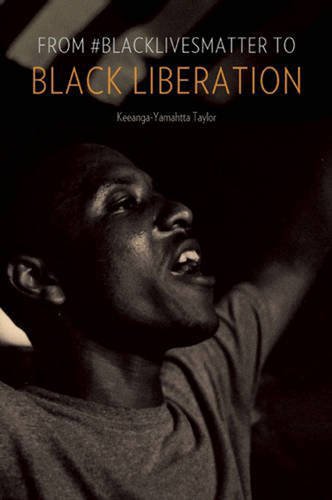
Book Title: From #BlackLivesMatter to Black Liberation
Author: Keeanga-Yamahtta Taylor
Reviewer: Nick Lyell, Media Associate
What’s the book about: From #BlackLivesMatter to Black Liberation places the ongoing #BlackLivesMatter movement in the larger context of the history of struggle for black liberation and makes some strong arguments for the contemporary movement’s well-placed nature to be at the center of a strong, intersectional progressive movement for serious, structural change.
Why it helps our groups: This book made me feel more hopeful about the possibilities for a better future than any of the post-election think pieces proliferating in every news outlet. Keeanga-Yamahtta Taylor wrote accessibly and persuasively that rather than fear for the future, we should all be out fighting for it, because we have a real possibility of winning.
This Changes Everything
Book Title: This Changes Everything
Author: Naomi Klein
Reviewer: Nick Lyell
What’s the book about: In This Changes Everything, Naomi Klein debunks common myths and details hidden truths surrounding climate change and its effects on our everyday lives. She explores the organizations and people who are trying to reduce carbon output, sell game-changing technologies, build local power, protect our water, or deny that climate change is an issue at all. She does all this with a story-teller’s voice that feels like a seamless narrative.
Why it helps our groups: Incredibly well-researched on all fronts, Klein tours the movements for climate justice from the top down to the grassroots. She exposes charlatans posing as saviors and gives me hope where I hadn’t looked. Not only does it cover the many intersectional issues relating to climate change, but also covers the movements, strategies, and tactics that have a real chance of seizing this crisis to address problems far beyond a narrow conception of environmentalism.
Upside Down: A Primer for the Looking-Glass World
Book Title: Upside Down: A Primer for the Looking-Glass World
Author: Eduardo Galeano
Reviewer: Grace Harvey, Digital and Content Associate
What’s the book about: Written as a series of lessons—a textbook, really—about the devastating power dynamics of capitalism, this book gave me the tools to question my own assumptions: am I interested in understanding and describing the world from the top looking down or from the bottom looking up? Upside Down combines tragedy, irony, fatalism, and clarity to explore how our most sacred North American institutions contribute to economic inequality, racism, and sexism around the world. Little engravings of skeletal businessmen, poltergeists, and armed men by José Guadalupe Posada lurk amongst the words, providing a lively and sinister reminder that while on this earth we are never far from mortality.
Why it helps our groups: Though focused on Latin America, the semantic lessons I have learned from Upside Down absolutely apply to my experience of current politics—how can I be part of a movement that centers the voices and experience of those historically left out of the conversation? Galeano understands how language is used to normalize oppression in a topsy-turvy world—a strategy we’ve seen in US politics for years, and one that will surely only intensify in the years to come. To keep on, we must reconcile politics with people. We must learn to speak upside down, and maybe right the world in the process.
Storming the Gates of Paradise: Landscapes for Politics
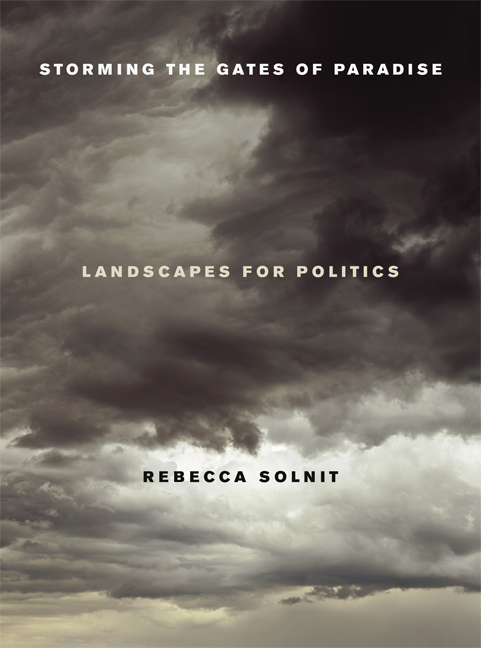
Book Title: Storming the Gates of Paradise: Landscapes for Politics
Author: Rebecca Solnit
Reviewer: Grace Harvey
What’s the book about: In an anthology of essays that defies any categorization I can think to assign, Rebecca Solnit describes her experiences as an activist, critic, historian, and documentarian. She’s an equally avid observer of protests and protesters, of borders and natural phenomena, of cities and deserts, movies, monuments, and memory. Pleasingly dense with references (some I catch, some I don’t) and grand in scope, this book is pretty intense but I have had a lot of fun sporadically picking it up and reading around inside—I always learn something new.
Why it helps our groups: Solnit’s writing anchors politics very firmly in real, grounded physical spaces—I find it very inspiring, spurring me on to make new connections between my work, my own politics, and my experiences. This collection of essays reminds me that politics exist within a vast plane of experiences and geographies, and there are always novel connections to tease out between our work and our colleagues’ work, between our work and history, place, literature, or culture.
Forcing the Spring: Inside the Fight for Marriage Equality
Book Title: Forcing the Spring: Inside the Fight for Marriage Equality
Author: Jo Becker
Reviewer: Guthrie Graves-Fitzsimmons, Media Associate
What’s the book about: New York Times correspondent Jo Becker chronicles the movement for same-sex marriage rights from 2008-2013. Her behind-the-scenes narrative focuses on the internal movement politics and personalities, including the debate of whether advocates should wage a state-by-state incremental strategy or take a more ambitious fight to the Supreme Court. Becker also takes a broader view of American culture and the forces that impacted a massive shift of public opinion on the issue during these years.
Why it helps our groups: There are two major components to issue advocacy: the issue advocates themselves (internal politics, conflicting interests, political divides, etc.) and the broader culture in which they advocate. Becker seamlessly links these two parts of issue advocacy together and tells an amazing story of how dedicated advocates made pushed forward one of the largest shifts in public opinion and civil rights law in American history.
Our Patchwork Nation: The Surprising Truth About the “Real” America
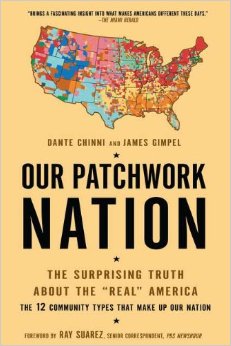
Book Title: Our Patchwork Nation: The Surprising Truth About the “Real” America
Author: Dante Chinni
Reviewer: Guthrie Graves-Fitzsimmons
What’s the book about: Wall Street Journal data journalist Dante Chinni offers a way to understand the American electorate by dividing America’s 3,144 counties into twelve distinct types of communities. He outlines the demographics, economics and politics of each county type. In the process, breaks down more simplistic models of the American electorate such as red-state vs. blue-state or the urban-rural divide.
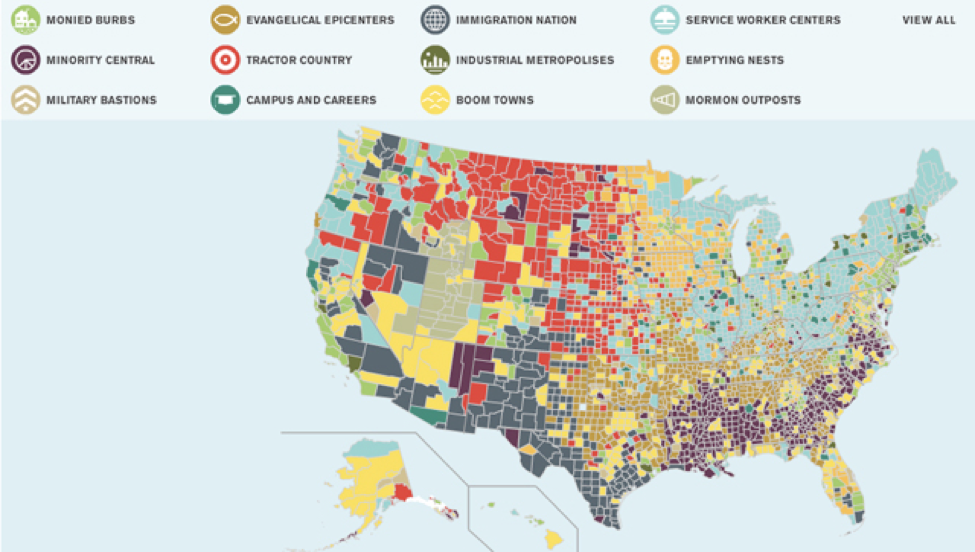
Why it helps our groups: Understanding the diversity and complexity of the American population should be of great concern to anyone working in politics or issue advocacy. While Chinni discusses the limitations of a county-by-county model and every county fitting nicely into his 12 categories, he does offer a more nuanced way to understand the country. Groups might use this data to think strategically about their outreach to Mormon outposts vs. boom towns vs. tractor country.

